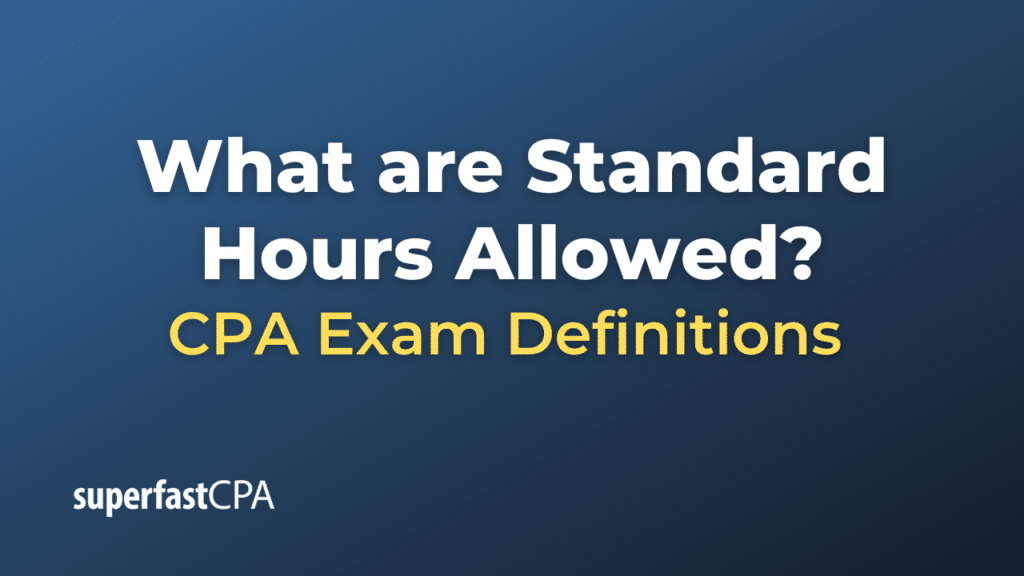Standard Hours Allowed
Standard hours allowed, often referred to in the context of variance analysis and standard costing, represents the number of labor hours that should be required to produce a specific number of units, based on predetermined time standards. It’s the amount of time that should have been used given the actual level of production activity, rather than the amount of time that was actually used.
In other words, it’s a benchmark or a yardstick to measure how efficient the actual labor performance was in relation to what was expected for the actual production output. If a company produced more units than expected in a given period, it would have a higher number of standard hours allowed for that production. Conversely, if fewer units were produced, the standard hours allowed would be lower.
The formula to calculate standard hours allowed is:
Standard Hours Allowed = Actual Units Produced × Standard Hours Per Unit
Where:
- Actual Units Produced is the number of items or units that were actually completed.
- Standard Hours Per Unit is the predetermined amount of time (in hours) expected to produce one unit of product.
The concept of standard hours allowed is critical in variance analysis, especially when determining labor efficiency or usage variance:
Labor Efficiency Variance = (Standard Hours Allowed − Actual Hours Used) × Standard Labor Rate
Example of Standard Hours Allowed
WidgetWorks Inc. – Labor Efficiency Variance Calculation for Producing Widgets
Given Data:
- Standard Hours Per Widget: From time studies, it has been established that it should take 1.5 hours to produce one widget.
- Actual Production: WidgetWorks manufactured 300 widgets in a specific month.
- Actual Labor Hours Used: The workers took 490 hours to produce the 300 widgets.
- Standard Labor Rate: Workers at the factory are expected to be paid $12 per hour.
Step 1: Calculate Standard Hours Allowed
Using the formula:
Standard Hours Allowed = Actual Units Produced × Standard Hours Per Unit
Standard Hours Allowed = 300 widgets × 1.5 hours/widget
Standard Hours Allowed = 450 hours
Step 2: Calculate Labor Efficiency Variance
Using the formula:
Labor Efficiency Variance = (Standard Hours Allowed − Actual Hours Used) × Standard Labor Rate
Labor Efficiency Variance = (450 hours – 490 hours) x $12
Labor Efficiency Variance = (-40 hours) x $12
Labor Efficiency Variance = -$480
Conclusion:
The labor efficiency variance of -$480 is unfavorable. This indicates that WidgetWorks Inc. was less efficient in labor performance than anticipated by the standards set. Specifically, the company took 40 hours more than the standard to produce the 300 widgets, resulting in an additional cost of $480.
To address this, the management team at WidgetWorks should delve deeper to determine the reasons for the discrepancy. It could be because of training issues, machinery malfunctions, or perhaps a need to revise the standard if it no longer reflects the current production environment.













